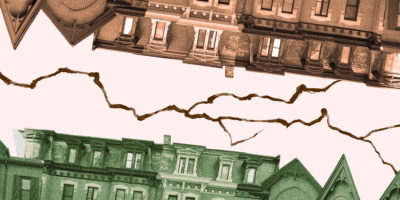Toronto Action for Social Change
Goals: Toronto Action for Social Change (TASC) lives by their motto to “build communities and end injustice through non-violent resistance.” TASC wants to transform the current profit-driven economy into a caring and sharing society where poverty and homelessness are eliminated.
Methods: By taking control away from most financial corporations and government institutions, TASC wants control redistributed among people within their own communities. Members idealistically live their lives as if “the transformation” – a society equipped with a social safety net to provide for the needs of all – has already taken place.
In May 1996 TASC organized “May day on the Bay” where members staged a sit-in on Bay street and set up their ideal model of downtown Toronto equipped with universal day care and homeless shelters. TASC staged two “Victory Gardens” at Queen’s Park where members attempted to plant zucchinis, peas and tomatoes in May and Winter wheat and Jerusalem artichokes in Oct. 1996. Sixteen people were arrested and charged. The group’s purpose was to demonstrate unused land could be used to grow vegetables for the hungry.
Last January, TASC organized a civil disobedience action where they poured blood on the steps of Queen’s Park to protest the deaths of the homeless. TASC also staged a “Spring Cleaning Party” at two abandoned apartment buildings at 88 and 90 Carleton street Last April. The group feels the homeless have a right to live in unused buildings.
TASC has organized a number of “CorporateHypocritePickets.”The most renowned being against Loblaws last December where one Santa Claus and two Elves were arrested. TASC believes grocery stores profit from holding food drives because the public buys the products.
–Vanessa Thomas
The Media Collective
Goals: The Media Collective provides a “free forum” for people to express their views and ideas about cultural, political and media related issues and to provoke people into questioning the conventional wisdom expressed in the mainstream media.
Methods: The Media Collective’s monthly meetings are open to anyone. The forum is for discussion and the free flow of ideas. Over the nearly two years it has been around, the number of participants has ranged from as few as 10 to as many as 100. There are several Media Collective organizations loosely networked across North America.
Many of the participants are members of small activist groups involved in projects and events to express their opinions and views in unconventional and sometimes unlawful ways. These include writing, publishing and distributing ‘zines (magazines and newspapers with a particular theme and agenda), organizing protests, and spray painting billboards they find to be objectionable. Members involved in these activist groups often announce and discuss upcoming activities during media collective meetings.
–Josh Heller
Anti-Racist Action
Goals: Anti Racist Action (Toronto) is committed to working towards a multi-racial, multi-cultural, sexually diverse and liberated society. ARA attempts to stifle the development of racist movements by “exposing, opposing and confronting” racist organizations and the “far-right agenda”.
Methods: Although ARA supports those who pressure the government and the government and the courts to move against racism and fascism, its primary focus is on direct action and grassroots responses to white supremacy. ARA functions through education, mass action and support of broader anti-racist struggles. They’ve worked in schools, neighbourhoods and on the streets to show opposition to white supremacy and fascism.
ARA also works with other anti-racist groups to develop common strategies to fight white supremacy. It organizes benefit shows and participates in campaigns against police brutality.
With its militant counter-presence, ARA claims to have helped to hinder racist organizing in larger metropolitan areas. Since 1994, ARA has been part of a growing network of similar groups in North America. ARA has more than 40 chapters across Canada and the US.
–David Dias
Natural Law
Goals: In a 1996 interview, Natural Law Party (NLP) leader Neil Paterson said he wanted to become Prime MInister of Canada because he didn’t like to see Canadians suffer. “My party has the knowledge of how to prevent suffering and problems in the life of the individual and the nation as a whole,” said Paterson. “This is the knowledge of natural law. In nature, everything is growing and prospering and in this party sees the supreme working model of an ideal government.” Natural law is the rules by which nature’s intelligence promotes the orderly growth and evolution of everything in creation.
Methods: The NLP had 136 candidates run in the last federal election. The Natural Law Party stands for prevention-oriented government, conflict free politics and proven solutions to Canada’s problems designed to bring the life of the nation in to harmony with natural law.
The party’s platform includes:
-natural health care programs to prevent disease, promote health and significantly cut costs
-yogic flying to help create coherence in the nation and reduce stress in people’s lives
-renewable energy production and energy conservation
-natural,sustainable agriculture practices to increase crop yields and profitability without hazardous chemical fertilizers and pesticides
-effective, field-tested community development and crime prevention programs like the “Transcendental Meditation” program in prisons to reduce inmate recidivism
-lowering taxes responsibly through cost-effective solutions to problems, rather than by cutting essential services
-reducing government waste and special interest control of our politics
–Eli Shupak
Black Action Defence Committee
Goals: Formed in 1988, the Black Action Defence Committee (BADC) is an advocacy organization that opposes the current criminal justice system. Its goal is to bring about changes in the conduct of police, prisons and other institutions of government, which BADC believes to be racist.
Methods: BADC maintains that, in order to remove racism from the justice system and to make police accountable for shooting blacks, society must stand together and pressure the government. BADC supports the victims of police shootings, invasion of property, wrongful arrests and battery. BADC supports the relatives of blacks who are killed by police. They recommend lawyers and hold press conferences for the families.
BADC also presents recommendations to the government for changing the criminal justice system. They attempt to educate their communities by going to schools to discuss the problems within the police force and the criminal justice system. They attempt to educate their communities by going to schools to discuss the problems within the police force and the criminal justice system.
–David Dias
New Socialists
Goals: The New Socialists don’t view themselves as a revolutionary party. Instead they hope to contribute to the building of a wider socialist movement in Canada and internationally. Other goals of the New Socialists include strengthening movements of resistance against oppression and exploitation (sexism, racism, homophobia, etc) and broadening the marxist understanding of the 20th century.
Methods: The New Socialists (NS) were formed in March 1996 after a few International Socialist (IS) members became disenchanted with the dogma and party-building model of the IS. Instead of focusing on building a membership base, the New Socialists focus on allowing discussion, debate and disagreement of socialist theories and ideas.
New Socialist member David Camfield says, “We promote people being independent socialist activists, not follow the line of a central leadership.”
No one gives directives on how the group should be run. Instead, elected committees suggest directions the group can take. Members then vote on whether or not to accept the suggestions. The New Socialists reject the authoritarian and bureaucratic system of so-called socialism practiced in China and the former Soviet Union.
The New Socialists achieve their goals by:
-holding public meetings
-publishing the bi-monthly New Socialist magazine
-being involved in coalitions and other activities efforts.
–Yen Chu
International Socialists
Goals: The International Socialists (IS) aim to eliminate capitalism, which they believe breeds exploitation, poverty, inequality and war. IS believes government institutions “must be overthrown and replaced by a system of democratic workers’ councils.” They aim to build a society based on the principles of equality and the fulfilment of human needs, not on corporate profit. IS opposes racism, sexism, homophobia and the exploitation of human beings for profit.
Methods: The International Socialists’ political structure involves workers democratically controlling their places of work and the institutions of society. The International Socialists publish The Socialist Worker to communicate socialist arguments and perspectives to the public. The paper is sold on campus every week.
International Socialists often participate in strikes and demonstrations and have been known to stage occupations at hospitals and at the University of Toronto and York University. They Often coordinate with other organizations, noisily disrupting political assemblies in order to deliver their demands
–David Dias
The Communist Party of Canada
Goals: Before the paranoia-ridden eras of Stalin, Ho chi Minh and Castro, the Communist Party of Canada had already established itself as a legitimate revolutionary force in Canada. For more than 76 years. The Marxist-Leninist organization has been actively campaigning for socialist causes and a complete overthrow of the capitalist economic system.
Methods: The CPC hope to topple capitalism, the demise of neoconservatism and the elimination of Canada’s class-oriented society. According to the CPC, the fight for the working class of Canada can only be achieved through what it calls “scientific socialism,” which adheres to the principles of Karl Marx and Frederick Engels. With the tempered use of scientific socialism, the CPC hopes to offer Canada a “people’s alternative,” in which it would like to:
– curb transnational corporations, scrap NAFTA and defend Canadian sovereignty
– make job creation the top priority, make a shorter work week with no less pay
– defend and improve social programs
-cut military spending by 50 per cent and convert military to civilian jobs
-defend the environment against corporate destruction
-guarantee the rights of workers to organize and bargain collectively
-expand democratic political rights equality for women, people of color
-democratic constitutional reform, based on the recognition of the full equality of Quebec with the rest of Canada, and a guarantee of full aboriginal rights.
The CPC ran eight candidates in the 1993 federal election and 13 in 1997. They also publish the People’s Voice newspaper, available by subscription (call 604-255-204 E-mail: pvc@istar.com).
-Kelly J. Preston
National Action Committee on the Status of Women
Goals: National Action Committee on the Status of Women (NAC) fights for the elimination of all forms of exploitation and oppression of girls and women. The organization works for women’s equality and social, economic and political justice.
Methods: NAC is an umbrella organization with a membership of close to 700 Canadian women’s groups which makes it the largest feminist movement in the country. The groups involved with NAC work locally by demonstrating against policies that affect women negatively.
In 1996 NAC organized the largest mobilization of women in Canada’s history: the “National Women’s March Against Poverty.” Thousands of women gathered on Parliament Hill to make demands on issues of poverty, discrimination, jobs and equality. In 1997 NAC worked to inform about the impact of the Asia-Pacific economic Cooperation (APEC) on women’s lives and it led the organization of the Women’s Conference in Vancouver. In 1998 (NAC’s 25th anniversary) NAC is organizing a public education campaign on Canada’s record on women’s rights as human rights.










Leave a Reply